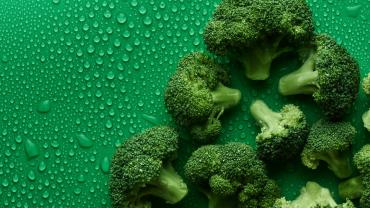
The nutritional benefits of vegetables are well-known and accepted; they contain fiber, antioxidants, vitamins, minerals, and polyphenols. Cruciferous vegetables contain all these beneficial compounds and may be particularly helpful in promoting liver detoxification due to their unique sulfur-containing compounds called glucosinolates (GLS).
Cruciferous vegetables are members of the Brassicaceae or Cruciferae family, such as broccoli, cauliflower, cabbage, kale, Brussels sprouts, radish, mustard, and watercress. GLs are responsible for the pungent odor and bitter taste of cruciferous vegetables and contribute to the plant’s defenses against environmental stress. More than 120 different types of GLEs have been identified. GLEs are biologically inactive and, when cut, damaged, or chewed, will become biologically active by the enzyme myrosinase. This leads to the active derivatives of isothiocyanates and indoles, such as sulforaphane or indole-3-carbinol.
The isothiocyanates and indole derivatives in cruciferous vegetables can function as bifunctional modulators, as seen in vivo and in vitro. They may inhibit or activate phase I enzymes (cytochrome 450 enzymes) and activate phase II enzymes. This can help to balance and adapt phase I and phase II liver detox pathways to variable exposures and encourage the successful elimination of toxins from the body.
In a randomized, crossover feeding trial, cruciferous vegetable consumption for two weeks increased phase I enzyme activity in dose-dependent manners compared to individuals with lower cruciferous vegetable intake. Clinical studies demonstrate that approximately five and ten servings per day of cruciferous vegetables induced phase II glucuronidation enzymes. Further clinical trials observed similar results with 250 g/day of Brussels sprouts and broccoli and 2 oz of watercress thrice daily. Glucuronidation is a phase II pathway essential in biotransformation and the elimination of exogenous and endogenous toxins. Other phase II pathways that cruciferous vegetables may upregulate are the sulfation and glutathione-conjugation pathway.
Healthy detoxification through cruciferous vegetable consumption may support healthy inflammatory and stress responses. A cross-sectional analysis investigated the association of cruciferous vegetable intake on inflammatory and oxidative stress markers among 1,0005 middle-aged women. The women with higher cruciferous vegetable intake displayed significantly lower circulating concentrations of proinflammatory markers TNF-α, IL-1β, and IL-6, even after accounting for various potential confounders. In two prospective cohort studies of 134,796 adults, the individuals with the highest cruciferous vegetable intake had 22% lower total mortality and 31% lower cardiovascular disease mortality compared to groups with the lowest cruciferous vegetable intake.
Genetics may play a role in the metabolism of cruciferous vegetables. Individuals may carry genetic polymorphisms that cause more rapid excretion of isothiocyanates, which results in needing a higher intake of cruciferous vegetables. On the other hand, other individuals may be genetically prone to have greater GLE activity and GLE-mediated detoxification upon cruciferous vegetable consumption.
Cruciferous vegetables, whether from the diet or supplemental, may support healthy liver function and detoxification. Improving detoxification may promote healthy inflammatory responses and overall health.
By Danielle Moyer, MS, CNS, LD